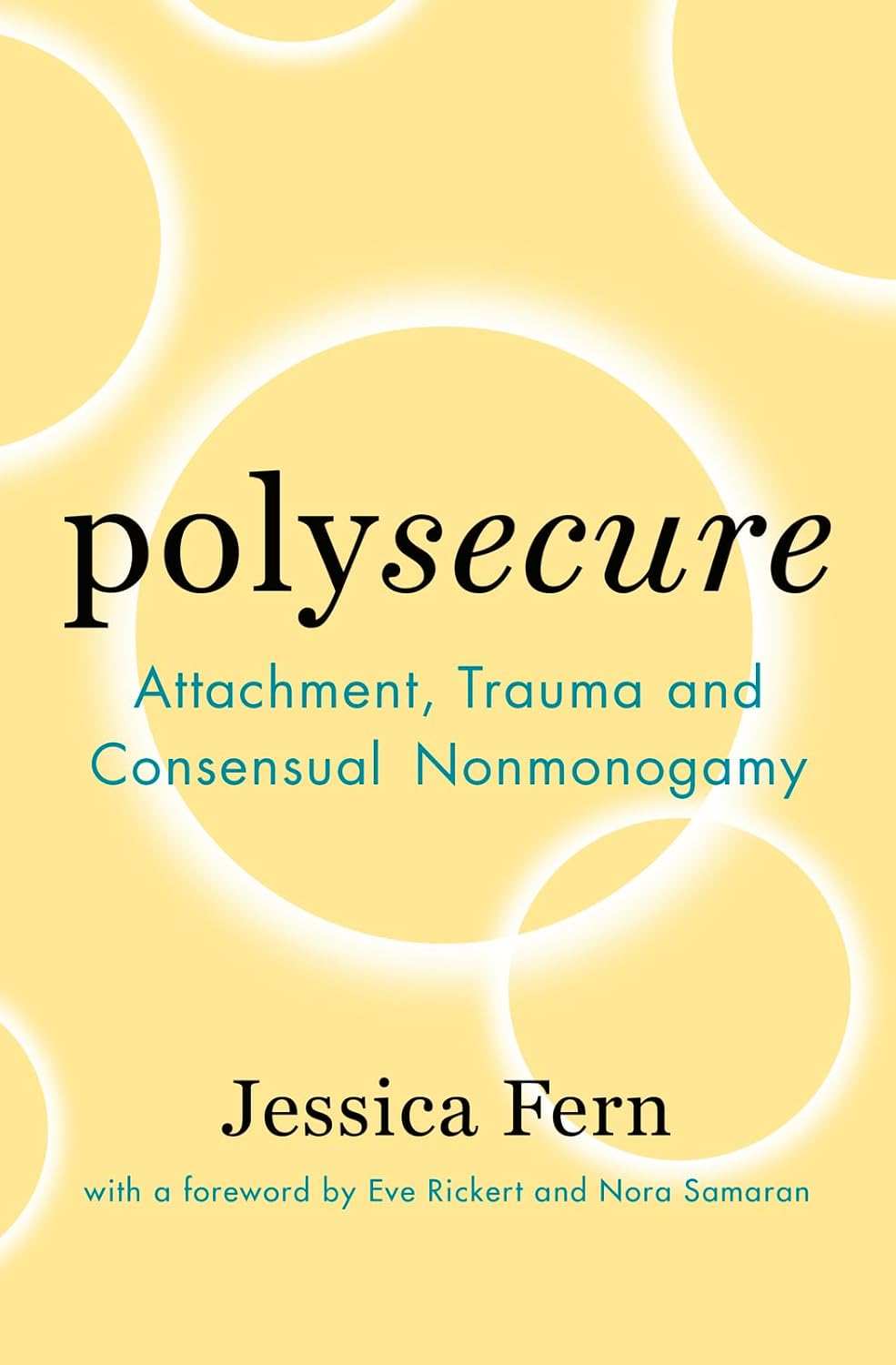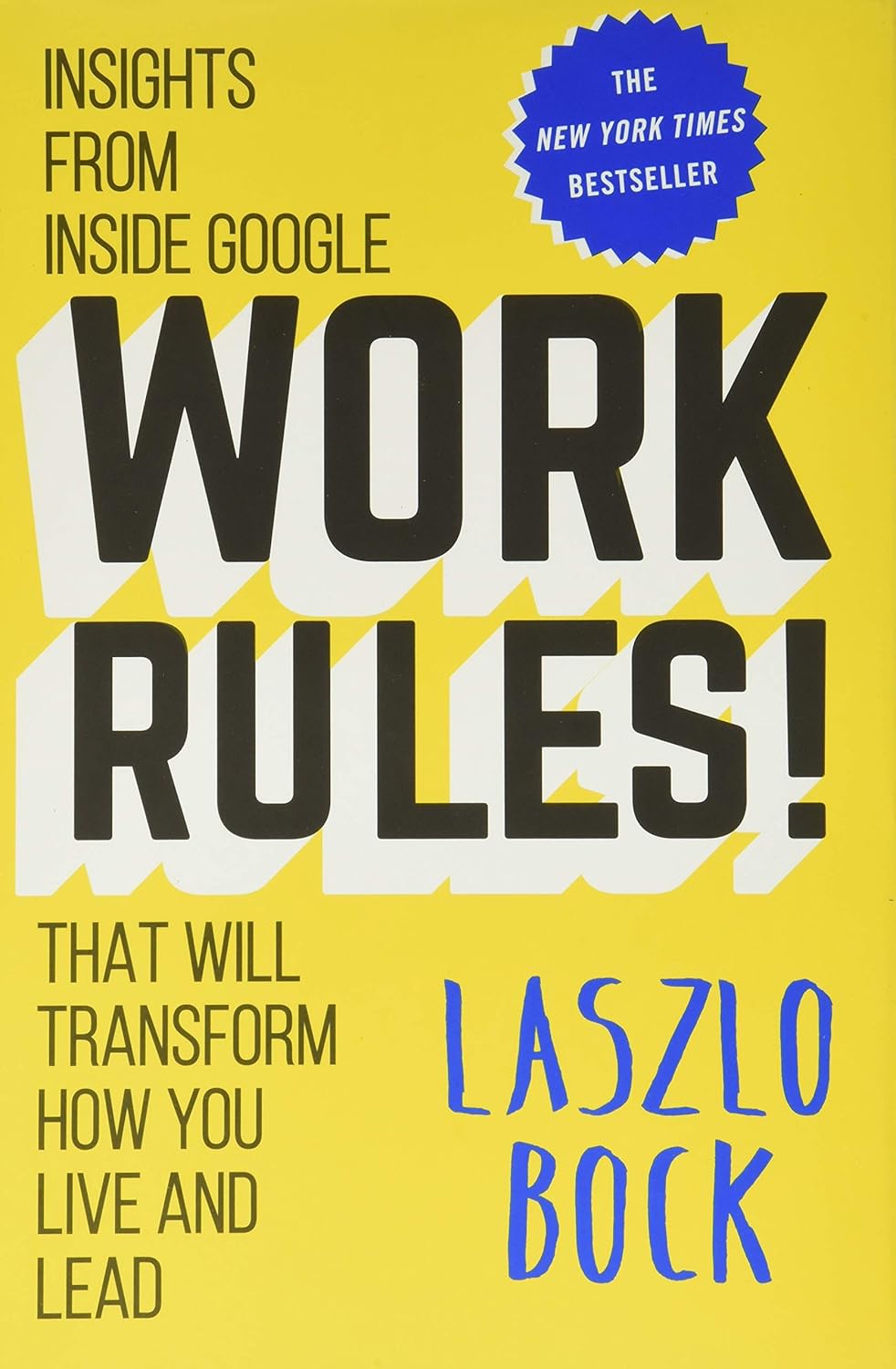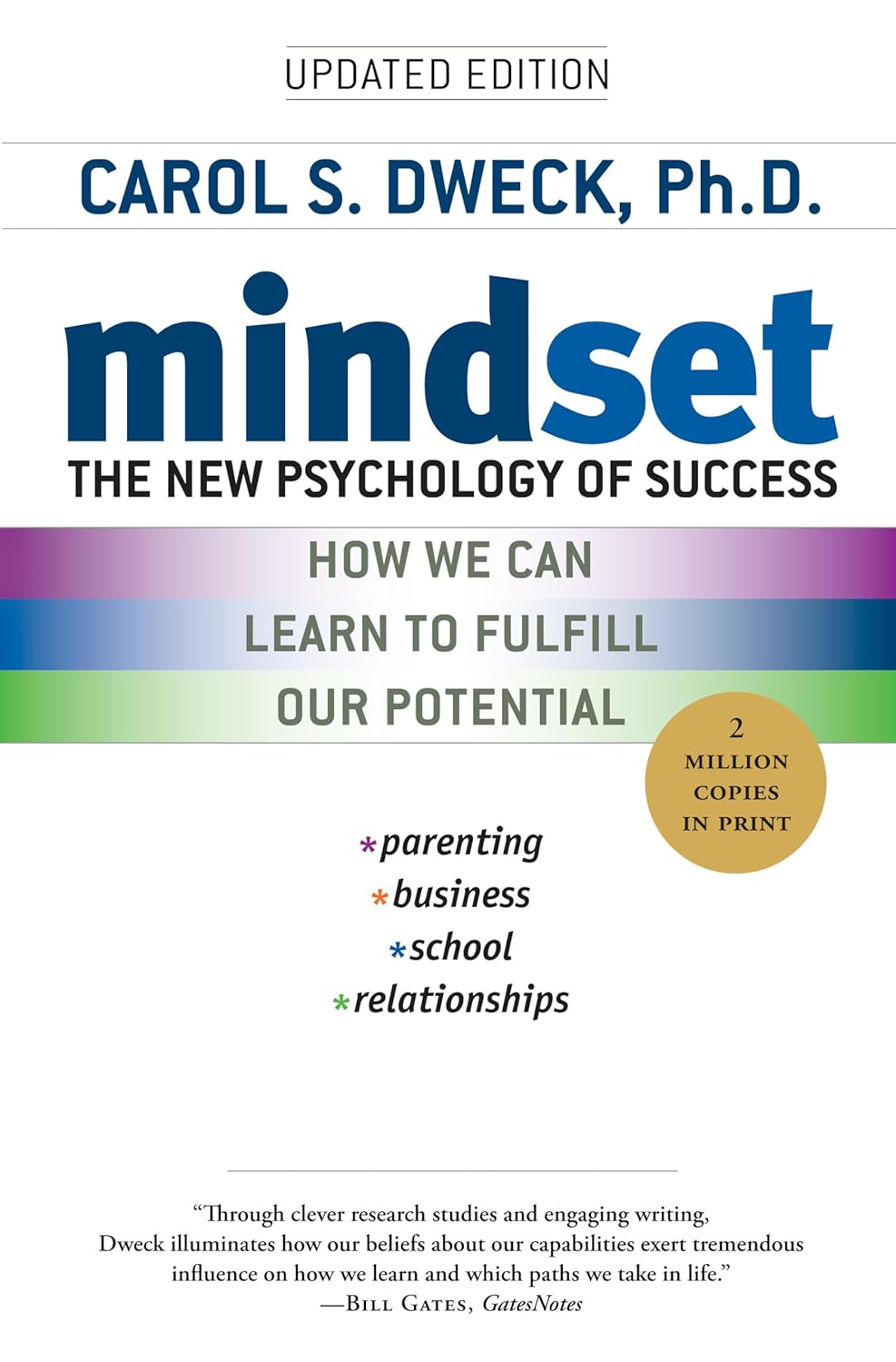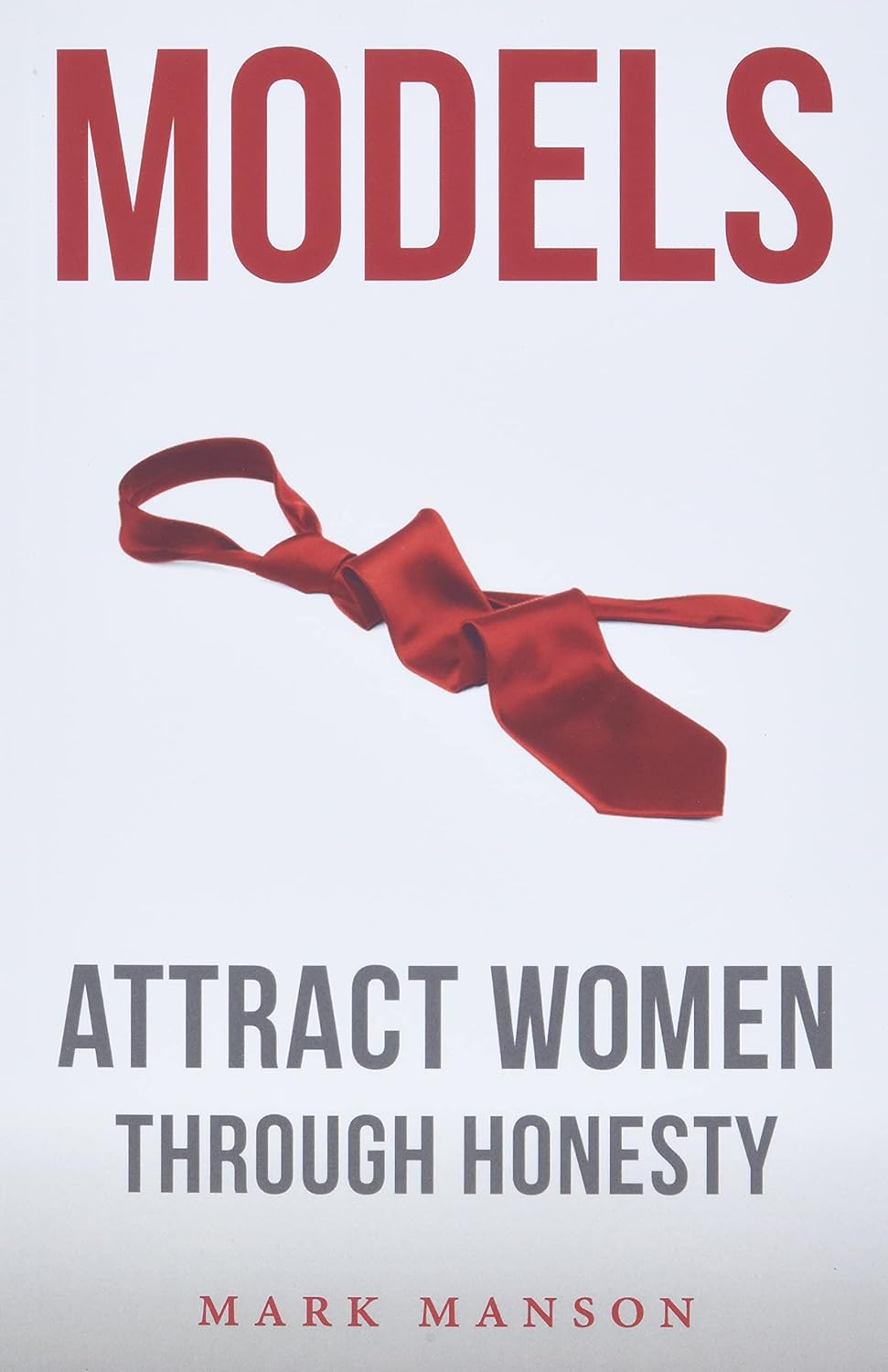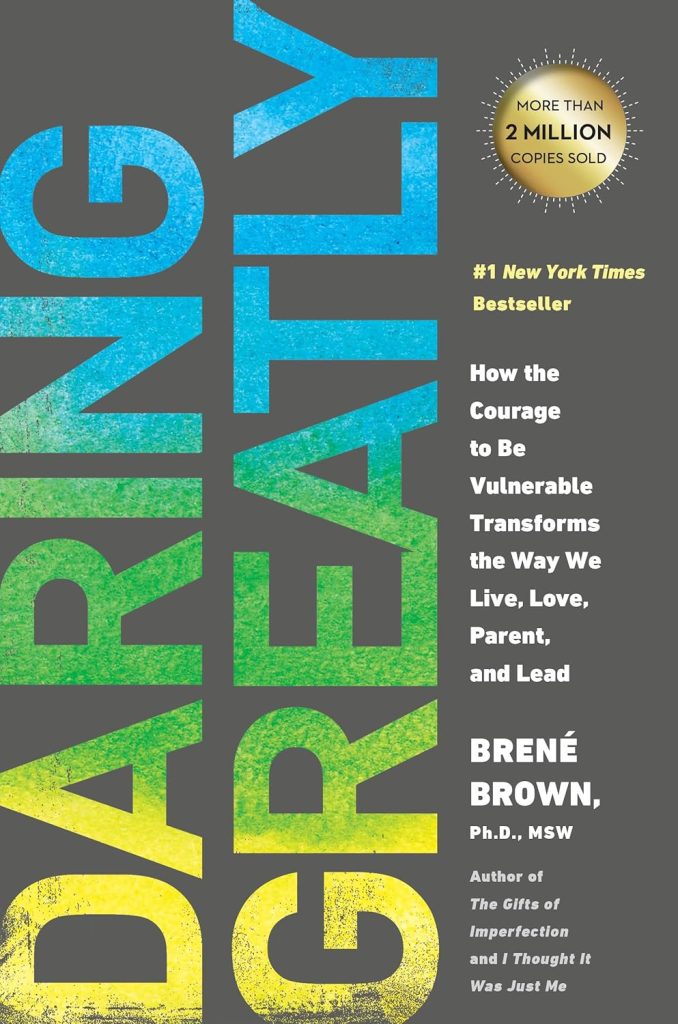
Buy The Book
Chapter
- ✦ What It Means to Dare Greatly
- ✦ Introduction: My Adventures in the Arena
- ✦ Scarcity: Looking Inside Our Culture of “Never Enough”
- ✦ Debunking the Vulnerability Myths
- ✦ Understanding and Combating Shame
- ✦ The Vulnerability Armory
- ✦ Mind the Gap: Cultivating Change and Closing the Disengagement Divide
- ✦ Disruptive Engagement: Daring to Rehumanize Education and Work
- ✦ Wholehearted Parenting: Daring to Be the Adults We Want Our Children to Be
- ✦ Final Thoughts
Daring Greatly: How the Courage to Be Vulnerable Transforms the Way We Live, Love, Parent, and Lead

About
The book explores the transformative power of vulnerability and its role in living a meaningful life. Brené Brown, a research professor at the University of Houston, is renowned for her work on courage, vulnerability, shame, and empathy. In this book, she draws on extensive research and personal experiences to challenge the cultural myths surrounding vulnerability, arguing that it is not a weakness but a source of strength and courage. Brown delves into the societal pressures of perfectionism and scarcity, illustrating how these forces hinder authentic connections and personal growth. Through engaging storytelling and grounded research, she encourages readers to embrace vulnerability to foster deeper relationships, inspire innovation, and cultivate resilience in various aspects of life, including parenting, leadership, and education. “Daring Greatly” is a compelling call to live wholeheartedly by daring to be vulnerable and embracing our imperfect, authentic selves.

Spark
Learn
Review
✦ What It Means to Dare Greatly
The concept of daring greatly comes from Theodore Roosevelt’s speech about the bravery of those who take risks. Embracing vulnerability means facing uncertainty and emotional exposure with courage. It’s not about waiting for the perfect moment or being invincible, but about engaging with life’s challenges openly. When you choose to protect yourself from vulnerability, you limit your potential for deep connections and true purpose. By stepping into life’s arena with courage, by allowing yourself to be seen and take risks, you create possibilities for meaningful relationships and experiences that enrich your life and bring fulfillment.
✦ Introduction: My Adventures in the Arena
I once told my therapist, “I hate vulnerability,” expecting her to fix it quickly. Instead, she called it an “exquisite emotion.” This puzzled me, as vulnerability felt more like discomfort and fear. My journey began with a background in Texas toughness and a desire to avoid vulnerability. I tried different personas—good girl, activist, corporate climber—to shield myself from emotional exposure.
Drawn to social work, I sought to fix others, but discovered it was about embracing uncertainty and empathy. My research naturally led me to study shame and empathy, revealing that true connection comes from embracing vulnerability. Despite my aversion, I realized that living wholeheartedly required it.
My defining moment came when I spoke at TED crossover Houston, sharing my work on vulnerability. The risk of being vulnerable in front of an audience was daunting, yet necessary. This leap of faith proved rewarding as my talk reached millions, reinforcing the importance of vulnerability in leadership, parenting, and personal growth.
I’ve learned that being both mapmaker and traveler involves embracing vulnerability’s discomfort. Though challenging, this journey has shown me that who we are matters more than what we know, urging us all to show up authentically and courageously.
✦ Scarcity: Looking Inside Our Culture of “Never Enough”
Facing scarcity means confronting the pervasive feeling of never being enough. From the moment we wake up, thoughts of inadequacy fill our minds—never having enough time, success, or worth. This culture of scarcity permeates every aspect of our lives, fueled by comparison and perfectionism. We constantly measure ourselves against others, leading to a cycle of shame and fear.
Scarcity thrives on three components: shame, comparison, and disengagement. Shame tells us we are not worthy, comparison ensures we never measure up, and disengagement keeps us from meaningful connections. This toxic mix creates a sense of isolation and anxiety, hindering our ability to live authentically and wholeheartedly.
To break free, we must recognize scarcity’s presence and its impact on our lives. Acknowledging that perfection and invulnerability are illusions allows us to embrace vulnerability and courage. By shifting our focus from what we lack to what we have, we cultivate gratitude and resilience.
We need to redefine success and self-worth, moving away from external validation and embracing our inherent value. This involves practicing self-compassion and understanding that we are enough, just as we are. By doing so, we can foster genuine connections and create a culture of empathy and understanding.
Engaging with vulnerability is essential in combating scarcity. It requires us to be present, open, and willing to take risks. This means allowing ourselves to be seen, despite the fear of judgment or failure. Vulnerability is not a sign of weakness but a pathway to deeper relationships and personal growth.
In our communities, workplaces, and families, addressing scarcity involves fostering environments where vulnerability is encouraged and valued. Leaders play a significant role by modeling vulnerability and creating spaces for open dialogue and trust. By prioritizing connection over competition, we can build supportive networks that challenge the scarcity mindset.
Ultimately, overcoming scarcity is about embracing our imperfections and understanding that our worth is not tied to achievements or possessions. It’s about daring to show up authentically, with all our flaws and strengths. By doing so, we create a life rich in meaning and connection, breaking the chains of “never enough” and nurturing a sense of belonging and fulfillment.
This journey requires courage and commitment, but the rewards are profound. By shifting our perspective from scarcity to abundance, we open ourselves to a world of possibilities, where we are free to explore, create, and connect with others on a deeper level. Embracing vulnerability and rejecting scarcity is a transformative act that allows us to live more fully and authentically.
✦ Debunking the Vulnerability Myths
Vulnerability is often misunderstood, leading to common myths that need debunking. First, many believe vulnerability is a sign of weakness. In truth, it requires immense strength to be open and honest about our feelings and experiences. It takes courage to show up and be seen when outcomes are uncertain. Vulnerability is the birthplace of innovation, creativity, and change, demanding bravery and resilience.
Another myth is that vulnerability means oversharing or spilling our secrets indiscriminately. Healthy vulnerability involves boundaries and discernment, choosing when and with whom to share. It’s not about exposing everything to everyone but finding trusted individuals who have earned the right to hear our stories.
Some think they can opt-out of vulnerability, believing it’s unnecessary or something to be avoided. However, vulnerability is an inevitable part of the human experience. Attempting to avoid it only leads to disconnection and isolation. Embracing vulnerability enriches our lives and relationships, fostering deeper connections and empathy.
There’s also a misconception that vulnerability leads to getting hurt. While it does involve risk, avoiding vulnerability doesn’t shield us from pain. In fact, it often magnifies feelings of loneliness and fear. By embracing vulnerability, we open ourselves to love, joy, and authentic connections that make the risks worthwhile.
Vulnerability is not about winning or losing but having the courage to step into the arena, regardless of the outcome. It’s about being present and engaged, even when there are no guarantees. This mindset shifts our focus from fearing failure to valuing the experience and growth that come from taking chances.
In leadership and work environments, vulnerability is often seen as unprofessional or weak. Yet, leaders who embrace vulnerability foster trust and innovation, creating spaces where people feel safe to express ideas and take risks. This openness leads to more cohesive and resilient teams.
In personal relationships, vulnerability is essential for intimacy and connection. It involves sharing our true selves and being receptive to others. This mutual openness builds strong, lasting bonds grounded in trust and understanding.
By debunking these myths, we realize that vulnerability is not something to be feared but embraced. It enriches our lives, allowing us to connect more deeply with others and ourselves. Choosing vulnerability is an act of courage that opens the door to a more authentic and fulfilling life, where we can truly thrive. Embrace vulnerability, and discover the strength and beauty it brings to your journey.
✦ Understanding and Combating Shame
Shame is a powerful emotion that can shape our lives, often lurking in the shadows and influencing our behavior. It whispers that we are not worthy of love or belonging, making us feel isolated and disconnected. To combat shame, it’s crucial to first understand its nature. Unlike guilt, which focuses on actions (“I did something bad”), shame is about self-identity (“I am bad”). This internalization makes it more damaging, as it attacks our core sense of self-worth.
To tackle shame, recognize its triggers and understand when it arises. These triggers are often tied to societal expectations and personal vulnerabilities. By identifying them, you gain the power to challenge and change the narrative. It’s also important to distinguish between shame and guilt, as guilt can be constructive, prompting us to learn and grow, while shame tends to paralyze.
Building resilience to shame involves developing self-compassion and understanding that everyone experiences shame. Sharing your experiences with trusted people can diffuse shame’s power. Empathy from others helps to heal shame, as it reminds us we are not alone in our struggles.
Practicing vulnerability is another key aspect of shame resilience. By daring to be open and authentic, you weaken shame’s hold. Vulnerability allows for genuine connections, which counteract the isolating effects of shame. It also involves embracing imperfections and understanding that being flawed is part of being human.
Creating a shame-resilient culture in families, workplaces, and communities involves fostering environments where open conversations and vulnerability are encouraged. This means modeling empathy, actively listening, and creating spaces where people feel safe to express themselves without fear of judgment.
To combat shame effectively, cultivate a strong sense of self-worth. This involves recognizing and embracing your strengths and flaws, and rejecting the notion that you need to be perfect to be valued. By affirming your worthiness, you build a defense against shame’s messages.
Ultimately, understanding and combating shame is about reclaiming your story and owning your experiences. By acknowledging shame and choosing to confront it with empathy and vulnerability, you can transform your relationship with yourself and others. This journey fosters a sense of belonging and connection, empowering you to live a more authentic and wholehearted life. Embrace this path with courage, and discover the liberation that comes from breaking free of shame’s grip.
✦ The Vulnerability Armory
The “Vulnerability Armory” refers to the strategies we use to protect ourselves from feeling exposed or inadequate. These defenses, while seemingly helpful, often hinder genuine connection and growth. One common defense is foreboding joy, where we brace for disappointment even in moments of happiness, fearing vulnerability. By doing so, we rob ourselves of fully experiencing joy.
Perfectionism is another armor, where we strive for flawlessness to avoid judgment or blame. This pursuit disconnects us from authenticity and can lead to feelings of inadequacy. Understanding that perfection is unattainable helps us embrace our imperfections and connect more deeply with others.
Numbing is a method many use to avoid vulnerability. Whether through overwork, substances, or distractions, numbing prevents us from facing uncomfortable emotions. However, it also dulls positive emotions and experiences. Allowing ourselves to feel, even when it’s uncomfortable, enriches our lives and relationships.
Detaching or pretending not to care is another defense mechanism. By disengaging emotionally, we avoid vulnerability but also sacrifice genuine connections. Embracing vulnerability involves showing up fully and allowing ourselves to be seen.
To dismantle these armors, practice gratitude and embrace moments of joy without fear. Gratitude shifts focus from scarcity to abundance, fostering resilience against vulnerability’s discomfort. This practice helps us appreciate the present and embrace happiness without fear of loss.
Cultivating self-compassion is essential in breaking down perfectionism. By being kind to ourselves, especially in moments of failure, we foster a sense of worthiness that doesn’t rely on external validation. This self-acceptance encourages us to take risks and be vulnerable without fear of judgment.
Engaging with emotions rather than numbing them is crucial. Allowing ourselves to feel and process emotions, even the difficult ones, leads to deeper understanding and connection. This openness creates space for empathy and authentic relationships.
Embrace wholeheartedness by daring to be vulnerable. Acknowledge the armor you use and consciously choose to set it aside. This act of courage opens the door to authentic living, where true connection and growth occur. By dismantling these defenses, you create a life rich in meaning and relationships.
Living vulnerably is an ongoing journey, requiring awareness and intentionality. By continually choosing authenticity over armor, you cultivate a life where you can thrive, embrace imperfections, and experience the fullness of human connection. Take the leap, and discover the strength that vulnerability brings to your life.
✦ Mind the Gap: Cultivating Change and Closing the Disengagement Divide
To bridge the gap between where we are and where we want to be, it’s crucial to recognize the disengagement divide that separates our intentions from our actions. This gap often stems from fear, uncertainty, and a reluctance to embrace vulnerability. To cultivate meaningful change, start by identifying these barriers and examining how they hinder authentic engagement.
One major obstacle is the lack of alignment between values and behavior. It’s easy to profess values, but living them requires courage and vulnerability. By clarifying core values and consistently acting on them, you close the gap and foster genuine connections.
Fear of failure and judgment often paralyzes efforts to initiate change. Shifting focus from perfection to progress allows for experimentation and growth. Embrace failures as learning opportunities, and create an environment where taking risks is encouraged and supported.
Cultivating change also involves fostering trust and empathy in relationships. By actively listening and valuing others’ perspectives, you build a foundation for open communication and collaboration. This trust empowers everyone to engage more fully, bridging the disengagement divide.
Addressing the gap requires a commitment to ongoing reflection and adaptation. Regularly assess how well actions align with intentions, and be willing to adjust course as needed. This flexibility ensures that growth is continuous and responsive to changing circumstances.
Encouraging vulnerability in yourself and others is key to closing the divide. By modeling vulnerability, you create a space where others feel safe to express themselves and take risks. This shared openness strengthens connections and promotes a culture of authenticity.
Engagement is not a one-time effort but a continuous practice. Commit to being present and mindful in interactions, valuing each moment as an opportunity to connect and grow. This intentionality bridges the gap and enriches both personal and professional relationships.
Recognize that the journey to closing the disengagement divide is unique for everyone. Be patient with yourself and others as you navigate the complexities of change. Celebrate progress, no matter how small, and remain open to learning and evolving.
Ultimately, bridging the gap involves embracing vulnerability, aligning actions with values, and fostering trust and empathy. By committing to these practices, you create an environment where authentic engagement thrives, leading to meaningful change and deeper connections. Step into this journey with courage, and discover the transformative power of closing the disengagement divide in your life.
✦ Disruptive Engagement: Daring to Rehumanize Education and Work
Rehumanizing education and work involves creating environments where authenticity and connection are prioritized. This requires challenging existing norms and daring to engage disruptively. Start by recognizing the dehumanizing aspects of traditional systems, such as rigid hierarchies and fear-based management. These elements often stifle creativity and engagement, leading to a culture of disconnection.
To foster rehumanization, cultivate environments where vulnerability is valued. Encourage open dialogue and the sharing of diverse perspectives, allowing individuals to express themselves without fear of judgment. By embracing vulnerability, you promote trust and innovation, essential components of a thriving community.
In education, this means shifting from standardized testing and compliance to a focus on curiosity and critical thinking. Encourage students to explore, question, and engage with the material in meaningful ways. This approach nurtures a love of learning and empowers students to take ownership of their education.
In the workplace, rehumanizing involves fostering a culture of empathy and collaboration. Prioritize employee well-being and create spaces where everyone feels valued and heard. This requires leaders to model vulnerability and actively listen to their teams, building a foundation of trust and mutual respect.
Disruptive engagement also involves redefining success. Move away from metrics that solely focus on productivity and profits, and consider measures that reflect well-being, creativity, and impact. By aligning success with values that prioritize human connection and growth, you create a more inclusive and sustainable environment.
To implement these changes, embrace continuous learning and adaptability. Remain open to new ideas and be willing to challenge the status quo. This flexibility allows for innovation and ensures that systems evolve to meet the needs of individuals and communities.
Recognize that rehumanizing efforts require collective commitment. Engage all stakeholders—students, educators, employees, and leaders—in the process of transformation. By working together, you build a shared vision and create lasting change.
Celebrate small victories and progress along the way. Acknowledge the courage it takes to disrupt and rehumanize, and use these successes to inspire further efforts. Remember that this journey is ongoing and requires persistence and dedication.
Ultimately, daring to rehumanize education and work leads to environments where people can thrive. By embracing vulnerability, fostering empathy, and challenging conventional norms, you create spaces that honor the human experience and promote authentic engagement. Step into this transformative journey with courage and commitment, and discover the profound impact of rehumanizing your world.
✦ Wholehearted Parenting: Daring to Be the Adults We Want Our Children to Be
Wholehearted parenting is about embodying the qualities and values you wish to instill in your children. It begins with the courage to be authentic, showing your children what it means to live vulnerably and embrace imperfections. This approach involves fostering an environment where children feel safe to express themselves and explore their identities without fear of judgment or shame.
To cultivate wholeheartedness, focus on connection and empathy. Engage with your children by actively listening and validating their emotions. This creates a foundation of trust and teaches them the importance of empathy in relationships. Encourage open conversations where feelings and ideas can be shared freely.
Modeling self-compassion is crucial. Show your children that mistakes are part of learning and growth. By forgiving yourself and embracing your own imperfections, you teach them to do the same. This resilience helps them navigate challenges with confidence and self-assurance.
Set boundaries with love and respect, providing structure while allowing flexibility. Clear expectations and consistent guidance help children understand limits, fostering a sense of security. Encourage independence by allowing them to make choices and learn from their experiences.
Celebrate effort and progress rather than perfection. Acknowledge their hard work and determination, reinforcing the value of perseverance and grit. This mindset helps children develop a growth-oriented approach to challenges.
Encourage curiosity and creativity. Provide opportunities for exploration and learning, nurturing their natural interests and passions. This fosters a love of learning and helps them discover their unique strengths and talents.
Practice gratitude as a family. Share moments of appreciation and reflect on positive experiences together. This habit cultivates a sense of abundance and reinforces the importance of appreciating what you have.
Be present and mindful in your interactions. Prioritize quality time and create meaningful experiences with your children. This presence strengthens your bond and shows them they are valued and loved.
Recognize that wholehearted parenting is a journey, not a destination. It requires ongoing reflection and a willingness to adapt as your children grow and change. Embrace the challenges and joys of this journey, knowing that your efforts to model vulnerability, empathy, and resilience have a lasting impact.
By daring to be the adult you want your children to become, you create an environment where they can thrive and develop into compassionate, confident individuals. Lead with authenticity and love, and watch your children flourish in a world that values wholehearted living.
✦ Final Thoughts
Embracing vulnerability is essential for leading a life filled with authenticity and connection. It’s about stepping into the arena, facing uncertainty, and daring to be seen. This journey requires courage, as it challenges us to let go of perfection and embrace our imperfections. By doing so, we open ourselves to deeper relationships and meaningful experiences.
Living wholeheartedly involves practicing gratitude, cultivating empathy, and building resilience against shame and fear. It’s about aligning our actions with our values and being present in our interactions. Through vulnerability, we create a more compassionate and connected world. Remember, this path is ongoing and requires commitment. Each step toward vulnerability strengthens our ability to live fully and authentically. Dare to take the leap, and discover the profound impact it has on your life and the lives of those around you. Embrace the courage to be vulnerable, and transform the way you live, love, and lead.
For People
– Leaders and Managers
– Parents and Educators
– Personal Development Enthusiasts
– Individuals Facing Life Transitions – Mental Health Professionals
Learn to
– Embracing Vulnerability
– Building Resilience
– Enhancing Empathy
– Strengthening Relationships
– Cultivating Authenticity






